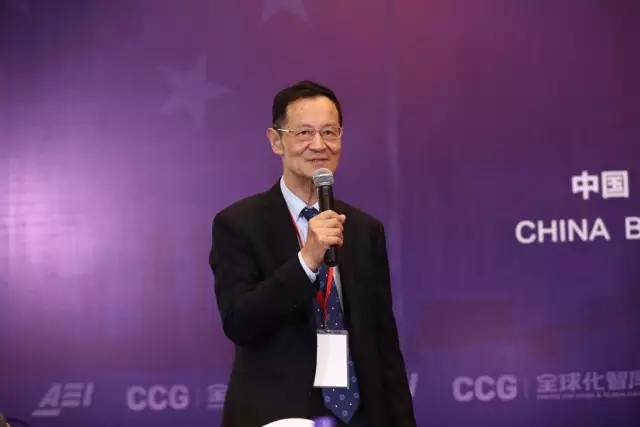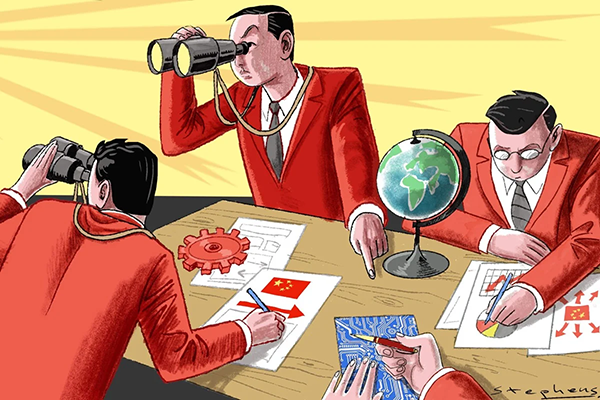He Weiwen: The “America First” Trade Policy is Hurting America
June 11 , 2019
By He Weiwen, a senior research fellow at CCG.
The “America First” trade policy has only resulted in two direct outcomes: increasing trade-related tensions between the US and its major trading partners, and threatening the global trading system.
On February 27, 2018 the US Trade Representative published a report entitled “Putting America First: The President’s 2018 Trade Policy Agenda” (hereafter referred to as “The Agenda”), which begins with: “Ladies and Gentlemen, it’s time to declare our economic independence once again.”
The Agenda states that the American trade policy is based on five pillars. The past year has witnessed exactly how the Trump Administration has been enforcing this policy.
The first pillar is “Supporting Our National Security,” which singles out China and Russia as strategic rivals. The Agenda states that “China and Russia challenge American power, influence, and interests, attempting to erode American security and prosperity.” Therefore, the ongoing US tariffs and the other restrictions on Chinese investment and technology to stop “Made in China 2025” are all based on the strategic containment of Russia and China, instead of pure trade issues.
The second pillar is “Strengthening the US Economy,” which states the Trump Administration’s efforts to “eliminate wasteful and unnecessary regulations that hamper business.” To that end, the Trump Administration has implemented and enforced a tax reform, and has also lowered taxes for US multinational enterprises looking to repatriate overseas profits to reinvest at home.
The third pillar is “Negotiating Better Trade Deals.” The Agenda claims that, “for too long, the rules of global trade have been tilted against American workers and business.” Thus, the Trump Administration launched a series of measures that seem to be going in the opposite direction: It withdrew from the TPP. It renegotiated NAFTA and forced Mexico and Canada to a new deal—USMCA, which is a real “putting America First” deal. There are many compulsory quotas, including 75% of the auto parts must originate from North America, and 40-45% of the auto parts must be made by American workers with a per hour wage of above $16, and thus is no longer a free trade arrangement. It also renegotiated the US-Korea Free Trade Agreement, which stipulates a significant South Korean quota increase for American autos, but the American tariffs on South Korean pickups will remain at 25% until 2041. In so doing, the Trump Administration intends to fence off foreign competition and bring manufacturing back to the US.
The fourth pillar is “Aggressive Enforcement of US Trade Laws”, which includes Section 301, 201, and 232. This pillar aims to “prevent countries from benefiting from unfair trading practices.” It is critical of the WTO rules and the unilateral tariffs specifically imposed on imported home use washing machines, steel, and aluminum, and especially on $250 billion worth of Chinese goods, arousing strong opposition and counter tariffs from China, the EU, Canada, South Korea, Turkey and other trading partners.
The last pillar is “Reforming the Multilateral Trading System.” The Agenda openly challenges the WTO rules by saying that “The United States will not allow the WTO…to prevent us from taking actions that are essential to the economic wellbeing of the American people.” No sooner said than done, the Trump Administration launched a series of unilateral tariffs and restrictions in direct violation of WTO rules, only based on American interests and domestic laws. In the year 2018 alone, the WTO received 39 complaints from its members, with the US submitting 20 of those complaints.
The developments of this past year, however, have largely pointed in another direction and have ultimately hurt America instead.
The US’s tariffs have actually hurt the US more than it has hurt China. According to Chinese customs statistics, in 2018, Chinese exports to the US grew by 11.3%, faster than its exports to the rest of the world. Its imports from the US, however, grew by a meager 0.7%. The sharp downturn happened after the White House imposed massive tariffs on $250 billion of Chinese goods. In the first half of 2018, US exports to China grew by a hefty 11.8%. It slowed abruptly to 2.1% in Q3 and turned to a free fall in Q4, at 1.8% off in October, 25% off in November and 35.8% off in December. US imports from China still had 13.3% growth year over year in October, grew by 9.8% in November, and only fell by 3.6% in December. Apparently, it has been difficult to find alternate suppliers for a large part of Chinese goods.
As a result, the China-US bilateral trade volume hit a new historic high in 2018 at $633.52 billion. The US deficit expanded to $323.33 billion, up from $47.51 billion in 2017. Trump’s attempt to bring down trade deficit with China failed once again.
The unilateral tariffs on steel, aluminum and washing machines have hurt US businesses as well. The Continental Nail, a major nail producer in America, announced job cuts due to higher steel price. Whirlpool, who demanded tariff hikes on washing machines, also saw more difficulties partly due to higher steel cost. Harley Davidson Cycles, the Flagship US motorbike producer, announced on June 25, 2018 its plan to move part of its capacities to Europe due to EU counter measures on US steel and aluminum tariffs.
A Washington Post article on January 28 said that Trump’s efforts to save the coal, steel and other heavy industries have been futile, as he is “fighting the law of gravity.”
China’s high-tech and emerging industries had an excellent performance in 2018. The added value of its high-tech industries rose by 11.7% in 2017, while it rose by 8.9% in other emerging industries as compared to 6.2% increase of the whole industry. On the contrary, the US high-tech companies started to feel a pinch. Apple’s sales in Greater China market fell by 27% in Q4 2018 year on year, to $13.17 billion. NVIDIA, a leading semiconductor manufacturer, decreased expectations of its performance for Q4 2018 by 7.2% due to the weakening China market.
The tax cut has not brought meaningful manufacturing back to America so far. According to the United Nations Conference on Trade and Development (UNCTAD) world investment report on January 21, 2019, global cross-border direct investment suffered a major setback in 2018, with total flows falling to 1.2 trillion dollars, 19% down from the already subdued level in 2017. Foreign direct investment inflows to the US also fell by 18% to $226 billion. The huge repatriation of overseas profit did flow back to the US real economy, but largely to the stock market, causing an irrational boom that ended in the worst December performance ever since the Great Depression. Instead of manufacturing jobs returning to the US, there has been weakening US investment in equipment, which contributed only 0.25 percentage points to GDP growth in Q3, 2018, even lower than 2016 (0.31 percentage point) before Trump took office.
The US economy is already on a declining trajectory. Although the US managed a 3.4% annual GDP growth rate in Q3, 2018, its fundamentals—personal consumer expenditure and private fixed investment combined, contributed 2.65 percentage points to Q3 GDP growth, a full percentage lower than in Q2. With Democrats controlling the House, there will be little chance to have a second series of tax cuts and further fiscal expansion. The IMF has estimated the US GDP growth at 2.5% for 2019 (2.9% in 2018) and 1.8% for 2020. The IMF has also warned that if the US continues with the unilateral tariffs that began on September 28, 2018, the US GDP growth will shed 0.3 percentage points. If the additional tariffs are imposed on $267 billion Chinese goods, US GDP growth will lose 0.5 percentage points.
Any positive developments have been derailed by the selfish “America First” objective, which seeks to advance American interests at the cost of other nations. It is based on a zero-sum mentality, rather than economic reality. Zero-sum economics does not exist in contemporary global trade. If the US’s trading partner loses, the US also loses. Multilateral trading systems, based on the global supply chain, governs and secures the free trade flows in a non-discriminative manner. The unilateral policies for protecting one nation only are undoubtedly not working.
From chinausfocus,2019-2-11
Topical News See more






